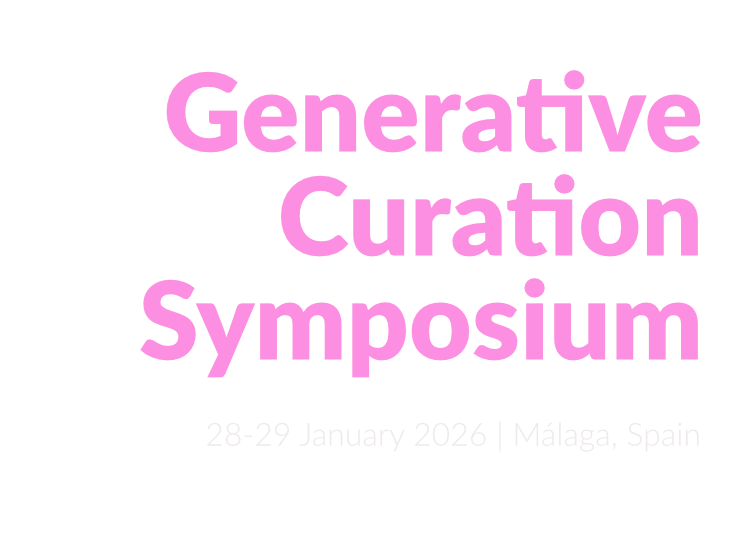Crucially, we conceive generative curation beyond merely “using AI as a tool”. Instead, generative curation treats curatorial practice itself as a programmable, procedural, and co-authored system. For this symposium, we define generative curation as the design and critical deployment of procedures, models, and rule-based systems (computational or hybrid) for curatorial purposes, including collections of art and cultural data, in the context of exhibitions, archives, museums, and cultural institutions. Moreover, these generative systems can iteratively produce, recombine, or adapt curatorial outcomes over time. These outcomes include (but are not limited to) selection and sequencing of works in terms of spatial, temporal, and narrative arrangement; interpretive layers; public programs; and the circulation of documentation.
This symposium stems from the tradition of curation in museums, archives, collections, and galleries. Historically rooted in the traditions of selection, care, and the scholarly contextualization of artworks, the curator’s role has evolved to become a central form of artistic and intellectual authorship. While we acknowledge the broad expansion of curatorial practice across domains, materials, and institutional framings, this symposium does not rehearse that expansion. Our focus is precise: to define, interrogate, and advance generative curation. But precisely because of the pervasiveness of these technologies, it expands to the more transversal implications of the curation of culture. The symposium, therefore, raises the question: What is the role of curation in the creation of knowledge? The crucial and radical choice of what to include and how, from a large collection, is now of renewed currency—there is so much material, a fight for exposure and public reach, a transformation of languages, media, and social codes that change the status of art and culture, and their mediated formats through internet culture.
Cultural institutions and independent initiatives increasingly rely on data-driven pipelines, digital platforms, fast and mediatized formats and platforms, and also AI-assisted workfl ows. This raises urgent questions about authorship and accountability; consent, bias, and provenance in datasets; institutional governance; reproducibility and documentation; and the ethics of automation in cultural labor. Generative curation offers both opportunities (scalability, responsiveness, new forms of audience address) and risks (opacity, technical capture, aesthetic homogenization) that demand rigorous debate and demonstration.
Within this expanded landscape, the blurring distinction between artist as curator and curator as artist is increasingly complexified, also by the aperture to collective and more-than-human agency. This raises fundamental questions about how we curate images, text, and other materials through/with AI models, and how we curate AI-generated content itself. What are the implications of using these tools and not using them? How are generative tools included in the curation process, and how are we defining curating in both the physical and the digital? How are these tools permeating the curatorial discourse and practice? This definition is a point of departure to be tested, refined, and contested so that, collectively, we can map the concept’s boundaries. Given the complexity and multidimensionality of curation, the implication of AI models constitutes an active surface of contact that both articulates and reconfigures the many elements, concepts, and actors involved, opening new problems and reformulating previous ones, and, therefore, requires an interdisciplinary, collective, and critical discussion.




